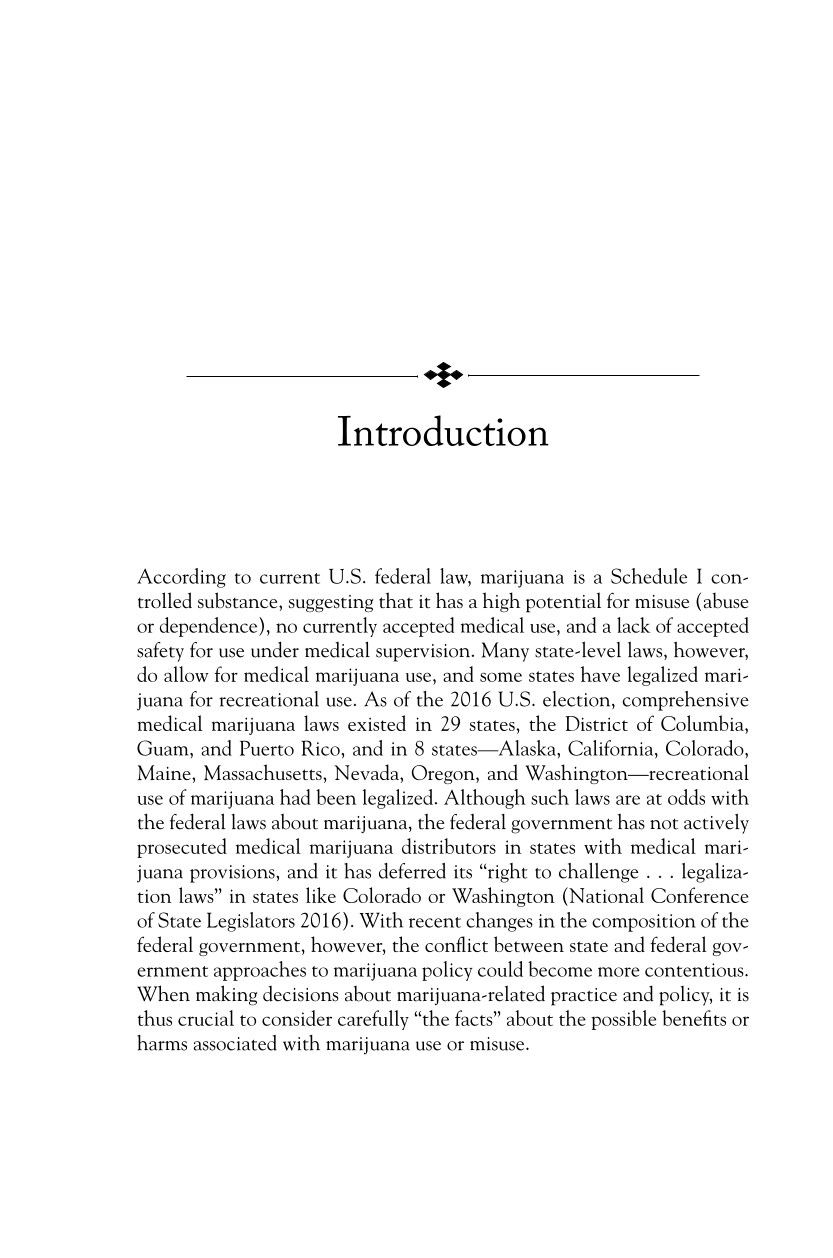Introduction
According to current U.S. federal law, marijuana is a Schedule I con-
trolled substance, suggesting that it has a high potential for misuse (abuse
or dependence), no currently accepted medical use, and a lack of accepted
safety for use under medical supervision. Many state-level laws, however,
do allow for medical marijuana use, and some states have legalized mari-
juana for recreational use. As of the 2016 U.S. election, comprehensive
medical marijuana laws existed in 29 states, the District of Columbia,
Guam, and Puerto Rico, and in 8 states—Alaska, California, Colorado,
Maine, Massachusetts, Nevada, Oregon, and Washington—recreational
use of marijuana had been legalized. Although such laws are at odds with
the federal laws about marijuana, the federal government has not actively
prosecuted medical marijuana distributors in states with medical mari-
juana provisions, and it has deferred its “right to challenge . . . legaliza-
tion laws” in states like Colorado or Washington (National Conference
of State Legislators 2016). With recent changes in the composition of the
federal government, however, the confl ict between state and federal gov-
ernment approaches to marijuana policy could become more contentious.
When making decisions about marijuana-related practice and policy, it is
thus crucial to consider carefully “the facts” about the possible benefi ts or
harms associated with marijuana use or misuse.











































































































































































































































































































